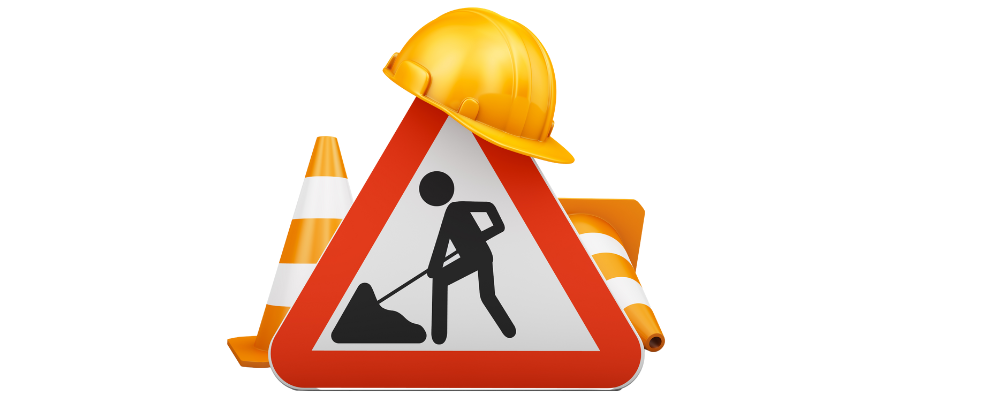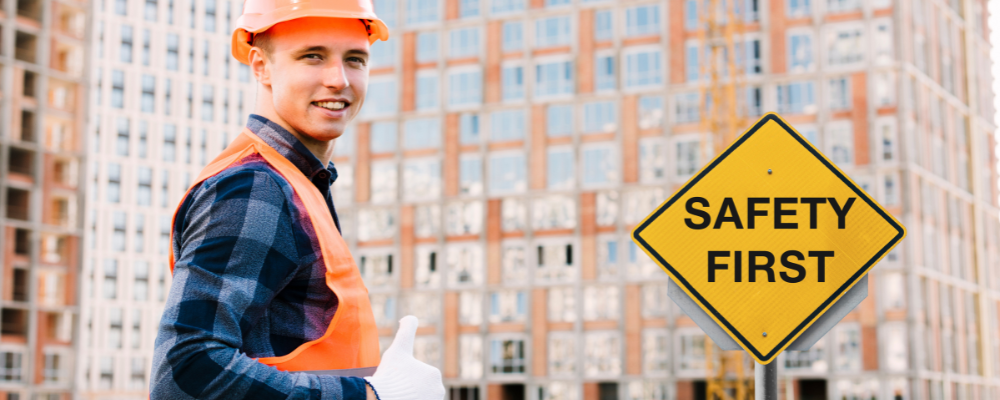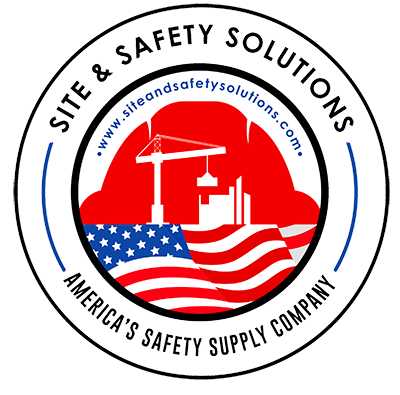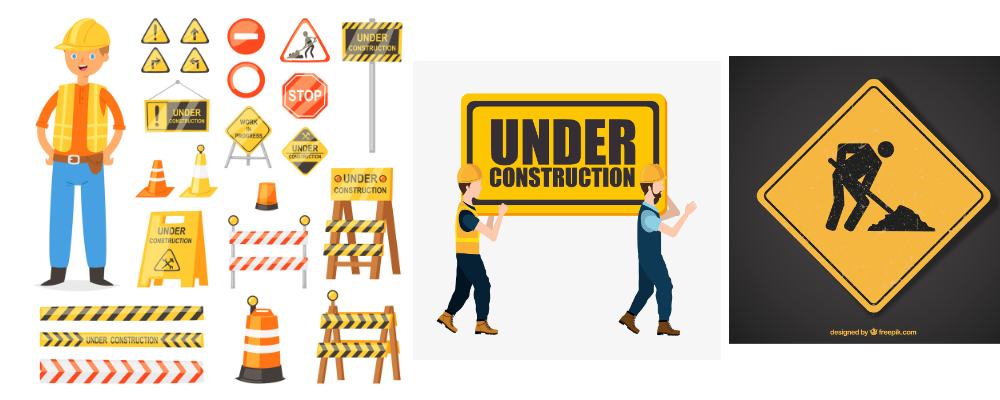
Introduction
Safety isn’t just a priority in the bustling construction world—it’s a non-negotiable cornerstone. Health and safety signs are silent guardians, speaking volumes in their simple yet critical role within construction sites. These signs aren’t just symbols; they’re beacons of caution, guiding workers through potential hazards and reminding them of necessary precautions.
Adhering to safety regulations isn’t merely a bureaucratic checklist—it’s a commitment to safeguarding lives. Beyond compliance, it’s about fostering a culture where every worker’s well-being is paramount. These signs aren’t static markers; they’re dynamic reminders that underscore the value of safety in every action, preventing accidents, and preserving the vitality of every individual on-site. In the construction world, where progress is measured by structure and design, safety signs are the unassuming pillars that ensure everyone goes home unharmed.
Understanding Health and Safety Signs
Health and safety signs are visual aids crucial for communicating vital information about potential hazards, preventive measures, and necessary safety protocols in construction settings. Their primary purposes encompass:
- Hazard Communication: These signs effectively convey various hazards present on construction sites, such as electrical hazards, falling objects, chemical exposure, and more. They alert workers to potential risks, enabling them to take necessary precautions.
- Preventive Measures: Health and safety signs identify hazards and provide clear instructions on preventive actions. Whether wearing protective gear, adhering to specific safety protocols, or highlighting restricted areas, these signs guide workers on necessary precautions.
- Safety Awareness and Education: They are pivotal in educating workers about safety measures, especially for new or changing hazards on site. By promoting awareness, these signs contribute to a safer work environment and reduce the likelihood of accidents.
- Emergency Preparedness: Certain signs, like those indicating emergency exits, fire extinguisher locations, or first aid stations, serve as critical navigational aids during emergencies. They facilitate swift responses and evacuation procedures in high-stress situations.
These signs employ universally recognized symbols, colors, and text to ensure comprehension across language barriers, making them an integral part of promoting safety awareness and adherence in the construction industry.
Regulatory Standards
In the construction industry, health and safety signs are used by stringent regulatory standards established by authoritative bodies such as the American National Standards Institute (ANSI) and the Occupational Safety and Health Administration (OSHA). These standards ensure uniformity, effectiveness, and compliance across construction sites.
- ANSI Standards: ANSI sets forth guidelines for safety sign design, colors, and formats to enhance clarity and visibility. It defines various sign categories, including danger, warning, caution, and safety instruction signs, each carrying distinct visual elements to convey specific messages effectively.
- OSHA Regulations: OSHA mandates using standardized safety signs in workplaces, including construction sites, to protect workers from recognized hazards. It requires employers to utilize signs that comply with specific design criteria and convey accurate information about risks and safety measures.
Adhering to these regulatory standards ensures legal compliance and, more importantly, fosters a safer work environment by allowing workers to readily identify and understand Health and safety signs regardless of location or employer.
Importance of Training and Awareness
Training Programs for Sign Comprehension
Construction workers face numerous hazards daily, and understanding safety signs is pivotal for their well-being. Implementing robust training programs to educate workers on interpreting safety signage is imperative. These programs should encompass:
- Identification and Meaning: Detailed sessions outlining the safety signs commonly encountered on construction sites, including warning signs, prohibitions, mandatory instructions, and emergency signs.
- Interpretation and Response: Practical scenarios that simulate real-life situations where workers learn to interpret signs accurately and respond effectively in hazardous conditions.
- Regulatory Compliance: Comprehensive knowledge about adherence to regulatory standards set by entities like OSHA and ANSI concerning the use and understanding of safety signs.
Benefits of Comprehensive Training
Investing in thorough training for Health and Safety Signs comprehension yields several advantages:
- Enhanced Safety: Empowered workers are better equipped to identify potential dangers and take proactive measures to mitigate risks promptly.
- Reduced Accidents: A workforce knowledgeable in interpreting safety signs minimizes the likelihood of accidents caused by ignorance or misinterpretation.
- Regulatory Compliance: Properly trained workers ensure compliance with safety regulations, fostering a safer working environment and avoiding penalties.
Promoting Safety Culture
Creating a safety-centric mindset within construction teams significantly contributes to overall site safety. Strategies for fostering this culture include:
- Leadership Role: Encouraging leadership to set an example by prioritizing safety in actions and decisions, influencing the entire team.
- Team Engagement: Involving workers in safety initiatives, seeking their input on safety protocols, and acknowledging their contributions fosters a sense of ownership and responsibility.
- Continuous Improvement: Establishing a feedback loop where workers can openly discuss safety concerns and suggest improvements creates a culture of constant safety enhancement.
Regular Safety Briefings
Regular safety meetings are indispensable for reinforcing the importance of health and safety signs. Practical safety briefings involve:
- Information Dissemination: Providing updated information on new signs, safety protocols, and any changes in regulations.
- Interactive Sessions: Engage in discussions or demonstrations highlighting the significance and relevance of specific signs to on-site safety.
- Open Communication: Creating an environment where workers feel comfortable discussing safety concerns and seeking clarification about safety signs enhances their understanding and adherence.

Types of Health and Safety Signs
Classification and Categories
Health and safety signs in construction sites serve distinct functions, aiding in risk mitigation and worker protection. Understanding their categories is pivotal for comprehensive safety communication:
- Warning Signs: These signs indicate potential hazards that could cause harm, alerting workers to take necessary precautions. Examples include “Caution: Eye Protection Required” or “Danger: Flammable Materials.”
- Prohibition Signs: These signs convey prohibited actions or behaviors within a specific area to ensure safety. Examples are “No Smoking” or “Do Not Enter Without Authorization.”
- Mandatory Signs: These signs specify actions that must be undertaken to maintain safety standards. They often include instructions like “Wash Hands Before Leaving” or “Use Personal Protective Equipment (PPE).”
- Emergency Signs: These signs indicate emergency facilities or equipment locations, guiding workers to safety exits, first aid stations, or emergency assembly points.
Product Showcase
Site and Safety Solutions offers a range of safety signs tailored to construction site needs:
-
ANSI Z535 Rigid Plastic “Caution Eye Protection Sign
-
- Features: Sturdy, rigid plastic construction ensures durability in harsh conditions.
- Materials: ANSI-compliant materials for clear visibility and longevity.
- Safety Benefits: Alerts workers to potential eye hazards, promoting the use of protective gear in designated areas.
-
Brady® “Notice Wash Hands Before Leaving As A…” Personal Hygiene Sign
-
- Features: Self-sticking polyester for easy application on various surfaces.
- Materials: High-quality polyester ensures long-term usage.
- Safety Benefits: Encourages hygiene practices crucial for preventing contamination in construction environments.
-
Brady® No Smoking Aluminum Sign
-
- Features: Durable aluminum construction suitable for outdoor use.
- Materials: Aluminum for weather-resistant properties and longevity.
- Safety Benefits: Prohibits smoking in designated areas, reducing fire hazards.
-
NMC™ OSHA Danger Construction Site Authorized Personnel Only Sign
-
- Features: OSHA-compliant design emphasizing site security.
- Materials: High-quality materials ensure visibility and durability.
- Safety Benefits: Limits access to authorized personnel, enhancing site safety and security.
-
NMC™ OSHA Danger Flammable Sign, Aluminum
-
- Features: Constructed from robust aluminum for longevity.
- Materials: Aluminum provides resilience against environmental factors.
- Safety Benefits: Alerts workers to flammable materials, prompting necessary precautions to prevent accidents.
Each product aligns with specific Health and Safety Signs categories, addressing diverse safety concerns prevalent in construction sites while meeting regulatory standards.
Best Practices for Implementing Health and Safety Signs
Placement and Visibility
- Optimal Placement Strategies: Signs should be placed at eye level and strategically positioned in areas with potential risks. High-traffic hazardous zones and regions must have prominently displayed signage.
- Importance of Visibility: Ensure signs have contrasting colors, clear fonts, and pictograms for easy comprehension. Adequate lighting, especially in dimly lit areas, enhances visibility and awareness.
Maintenance and Compliance
- Regular Checks and Maintenance: Conduct routine inspections to ensure signs remain visible, undamaged, and legible. Replace fading, damaged, or obstructed movements to maintain their effectiveness.
- Adherence to Regulatory Compliance: Regularly update signs to comply with evolving safety standards and regulations. Adhering to regulatory guidelines ensures ongoing site safety and prevents potential penalties.
Implementing these practices ensures that health and safety signs effectively communicate essential information, reducing accidents and promoting a safer working environment for construction workers.
Evolving Technology in Safety Signage
Introduction to Innovative Signage Technology
The landscape of safety signage is evolving with technological advancements, such as:
- Digital Signage: Utilizing digital displays to convey dynamic safety information, providing real-time updates, and adapting to changing site conditions.
- Smart Sensors: Implementing sensors that detect environmental hazards and trigger appropriate signage or warnings, enhancing responsiveness to immediate risks.
- Augmented Reality (AR): Integrating AR technology to overlay information onto physical surroundings, offering interactive safety guidance and instructions.
Integration with Wearable Devices
Exploring the integration of Health and Safety Signs with wearable tech presents numerous benefits:
- On-the-Go Safety Alerts: Wearable devices can provide workers with personalized safety notifications based on location or surroundings.
- Hands-Free Information: Offering safety guidance through wearable tech ensures workers can access vital information without disrupting their tasks.
- Complementary Role: Wearable devices complement traditional signage by offering contextual and personalized safety information.
Future Trends and Predictions
Anticipating the future of safety signage technology involves:
- Innovative Solutions: Predicting advancements like AI-driven signage, predictive hazard detection, and further integration with IoT devices.
- Enhanced Safety Features: Discuss how future developments will bolster safety practices by providing more accurate and instantaneous information.
- Adaptation Challenges: Considering potential challenges in adopting new technologies and strategies for seamless integration into existing safety protocols.
Case Studies and Success Stories
Real-Life Examples of Signage Implementation
Highlighting instances where effective use of health and safety signs significantly improved construction site safety:
- Scenario Illustration: Detailed case studies showcasing how specific signage strategies mitigated potential hazards.
- Impact Analysis: Demonstrating the tangible improvements in safety metrics or reduction in accidents due to effective signage implementation.
Client Testimonials and Feedback
Featuring testimonials from construction companies or workers who have experienced the benefits of specific safety signs:
- Firsthand Accounts: Sharing anecdotes or feedback that vividly describe how these signs positively impacted site safety and operations.
- Testimonial Validation: Validating the effectiveness of these signs through credible and genuine testimonials, emphasizing their significance in real-world scenarios.
Lessons Learned and Takeaways
Summarizing key insights of Health and safety signs from the case studies and testimonials:
- Best Practices: Identifying common strategies or approaches that led to successful safety sign implementations.
- Implementation Guidance: Offering actionable takeaways and recommendations for readers to implement similar successful strategies in their construction environments.
For more information, visit our website and Facebook page.
And for more products,
ANSI Z535 Rigid Plastic “Caution Eye Protection Sign”, 1/Each
Brady® No Smoking Aluminum Sign
NMC™ OSHA Danger Construction Site Authorized Personnel Only Sign
NMC™ OSHA Danger Flammable Sign, Aluminum
Conclusion
In closing, our exploration of health and safety signs for construction workers reveals their pivotal role in safeguarding lives and enhancing worksite security. Throughout this guide, we’ve emphasized several crucial points:
- Understanding Significance: Health and safety signs are vital communicators of potential hazards, precautions, and necessary safety measures within construction sites.
- Compliance and Regulations: Adhering to regulatory standards set forth by entities like ANSI and OSHA ensures the implementation of effective Health and safety signs practices.
- Product Showcase: Site and Safety Solutions proudly offers a range of premium safety signs designed to address the unique needs of construction environments, ensuring maximum protection and compliance.
Construction workers must prioritize safety at every stage of their work. Utilizing appropriate health and safety signs isn’t merely a requirement—it’s a proactive measure towards safeguarding oneself and fellow workers from potential dangers.










